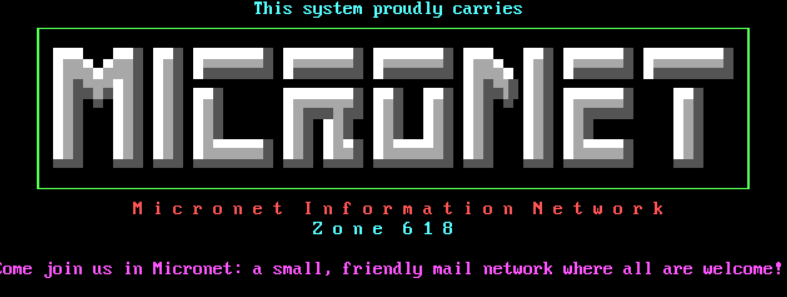Relativity, Amazon, and NASA continue work on Cape infrastructure
Date:
Fri, 22 Nov 2024 20:44:03 +0000
Description:
In addition to SpaceXs work, Cape Canaveral has been busy with Relativity Space focusing on The post Relativity, Amazon, and NASA continue work on Cape infrastructure appeared first on NASASpaceFlight.com .
FULL STORY ======================================================================
In addition to SpaceXs work, Cape Canaveral has been busy with Relativity Space focusing on its reusable Terran R rocket, which is being developed at Space Launch Complex-16. Upgrades to this site, including new infrastructure, were documented during a recent NSF flyover.
NSF also documented advancements at Amazons Kuiper facility, now nearing completion to support broadband satellite launches, as well as progress on NASAs Mobile Launcher 2 and Blue Origins preparations at LC-36. Emerging projects like Space Preps processing center further underscore the rapid expansion of Floridas spaceport infrastructure.
Relativity is working on its partially reusable Terran R, after launching the Terran 1 rocket on its sole test flight in March 2023. The Terran 1, which
had 90 percent of its mass made up of 3D-printed components, initially succeeded in its first stage flight, but the second stage failed.
After the Terran 1s failure, Relativity decided to cancel all further development of Terran 1 and move straight to the Terran R rocket. Terran R consists of a reusable first stage powered by 13 Aeon R engines using methane and liquid oxygen as propellants, along with an expendable second stage using one Aeon Vac engine. Artists impression of the Terran R launching from
SLC-16. (Credit: Relativity Space)
The 82 m tall and nearly 5.5 m wide Terran R is to fly up to 23,500 kg to low-Earth orbit with first stage reuse, or 33,500 kg in fully expendable
mode, making it a heavy lift vehicle. Like Terran 1, Terran R will use Space Launch Complex-16 (SLC-16) as its launch site, and NSF conducted a flyover last month which obtained imagery of the complex and other areas of the Kennedy Space Center (KSC) and the Cape Canaveral Space Force Station
(CCSFS).
See Also Spaceflight General Section Blue Origin Updates Click here to Join L2
New tanks have been seen erected at the tank farm, and NOAA survey imagery showed a foundation being laid down to support a large flame trench that will redirect the thrust from Terran Rs 13 Aeon engines. There is also a drilling rig that is preparing the ground for a large processing hangar to house
Terran R at the launch complex.
This hangar is next door to the one that housed the Terran 1. That hangar is still present, and the new hangar is going to be much larger. The Terran R infrastructure is still in its earlier stages and should be in a very different state of construction and readiness by this time next year, as the company envisages a 2026 first flight for Terran R from SLC-16. Amazons new payload processing facility near completion. (Credit: Julia Bergeron for NSF)
During NSFs flyover, imagery was also obtained of the Amazon Kuiper payload processing facility next to the Shuttle Landing Facility, also now known as the Launch and Landing Facility. The Amazon facility is nearing completion, and the companys logo is now on the building. In addition, a road at the facility is now paved, and progress has been seen on a storage building at
the site.
Amazon is planning to start operational Kuiper launches in 2025, as it works to meet an FCC deadline for placing a large portion of its constellation into orbit. Kuiper is designed to provide low-latency, high-bandwidth broadband service and is a competitor to SpaceXs Starlink. Amazon must launch 50
percent of its satellites and operate them by no later than July 30, 2026, as per the license it obtained from the FCC.
The Amazon payload processing facility is a key element of the companys strategy to quickly fly its constellation. The facility will receive
shipments of the satellites from the companys Kirkland, Washington factory before processing them with the help of a 30 m tall high bay clean room that can accommodate Vulcan Centaur and New Glenn fairings. The encapsulated satellite payloads will be moved to the launch site from the processing facility. The Mobile Launcher 2 chair shown during NSFs flyover. (Credit: Julia Bergeron for NSF)
Mobile Launcher 2 for NASAs Space Launch System (SLS) rocket, designed to support the Block 1B version of SLS, has also seen progress. The beginnings
of the platforms launch tower are now clearly seen, with seven pieces of the towers base known as the Mobile Launcher chair now present. This base will support the first tower module.
Mobile Launcher 2 is to support SLS launches starting with Artemis IV, as Block 1B can support launching not just the Orion spacecraft with its crew
but also heavy cargo like elements for NASAs Gateway in lunar orbit. The mobile launcher may not be ready to support a launch until the spring of
2029, while there are questions about the future viability of SLS being voiced, especially after the recent election results in the United States.
During NSFs flyover of Cape Canaveral, damage from Hurricane Milton was seen at Blue Origins Exploration Park campus. However, the damage was relatively limited and most facilities were relatively unscathed, with the most significant exception being the facilitys storage building that was under construction. The flattened storage building under construction at Blue Origins Exploration Park campus. (Credit: Julia Bergeron for NSF)
The flyover also documented damage to the 2CAT second stage testing building from an earlier mishap, as well as progress on a large parking garage.
Imagery was also obtained of the launch pad at Launch Complex-36 (LC-36) as well as other elements of Blue Origins facilities at Cape Canaveral.
The flyover was conducted before the rollout of New Glenns first stage, So Youre Telling Me Theres A Chance , to LC-36 on Oct. 30 in preparation for its first flight. New Glenns two stages have now been mated in the complexs
hangar as preparations continue for a static test firing. The full stack rolled out on Nov. 21.
Companies like Stoke Space, Firefly, and ABL Space Systems also have facilities at Cape Canaveral, though they were not covered in the recent flyover. Stoke Space has leased Launch Complex-14, which hosted orbital Project Mercury launches including John Glenns in the early 1960s. Firefly has a lease on Space Launch Complex-20, though it has prioritized operations at Wallops Island in Virginia over operations in Florida. The LC-14 facility at Cape Canaveral Space Force Station as recently seen by an Earth
observation spacecraft. (Credit: Airbus and CNES)
ABL leased Space Launch Complex-15 starting in early 2023, but ABL has now announced a pivot to missile defense systems while discontinuing its commercial launch ambitions. The ABL RS1 only flew once, and that launch failed shortly after liftoff from Kodiak, Alaska, and changes in the market caused ABL to reevaluate its plans. It remains to be seen whether SLC-15 will get another tenant.
There are two additional facilities now planned for the future that will accommodate multiple civil, commercial, and government customers at the Kennedy Space Center (KSC). NASA and All Points Logistics have recently submitted a draft environmental assessment for Space Preps upcoming complex
at KSC.
Space Prep, a service of All Points Logistics, is developing a complex south of the Vehicle Assembly Building with a spacecraft processing center and a spacecraft logistics center as a commercial space infrastructure-as-a-service offering. Artists impression of the two facilities at the upcoming Space Prep complex. (Credit: All Points Logistics/Space Prep)
The complex is to begin construction next year and achieve initial
operational capability in 2027 and will offer processing services for spacecraft of all sizes, including large ones that need 10 m fairings. While Astrotech already has a payload processing facility just outside KSC that serves the space sector, this development will add much more capacity for spacecraft processing for the growing sector as spaceflight activity
continues to ramp up.
(Lead image: Relativitys launch facility at SLC-16 is seen from a recent NSF flyover. Credit: Julia Bergeron for NSF)
The post Relativity, Amazon, and NASA continue work on Cape infrastructure appeared first on NASASpaceFlight.com .
======================================================================
Link to news story:
https://www.nasaspaceflight.com/2024/11/flyover/
--- Mystic BBS v1.12 A47 (Linux/64)
* Origin: tqwNet Science News (1337:1/100)







